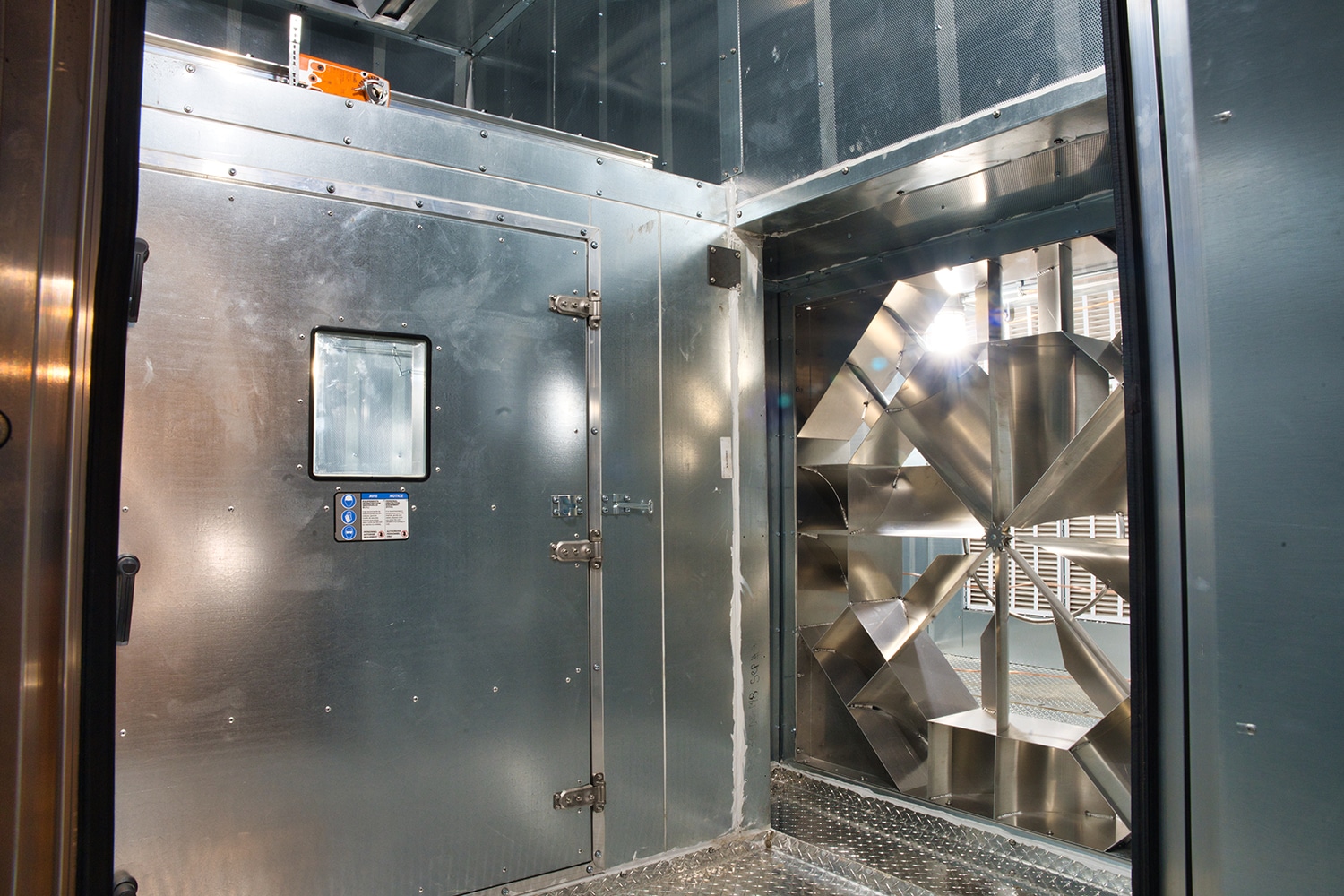Kleinhans Music Hall
Nortek Air Solutions’ AHU Customization and Sound Attenuation Help Kleinhans Music Hall Replace 83-Year-Old HVAC System

At A Glance
Two knockdown 41-foot-long AHUs and two 13-foot-long exhaust air units (EAU) were rigged into third-floor and basement mechanical rooms, respectively. All four units required quick assembly and start-up within a short summertime recess to meet the fall orchestra season’s mission-critical opening night deadline.
The design team’s HVAC specification reduced ductwork air movement noise and equipment reverberation break-out sound by an average of 10 dBA throughout the seating and stage areas versus the original equipment.
Nortek Air Solutions configured the Ventrol®-brand units’ operating sequences to accommodate the mechanical room’s obstructing support beams and to attenuate sound.
Project Team
Building Owner
City of Buffalo
Consulting Engineer
M/E Engineering, Buffalo, NY
Mechanical Contractor
John W. Danforth Co., Tonawanda, NY
HVAC Equipment Manufacturer
Nortek Air Solutions
Manufacturer’s Rep
J.W. Swanson & Associates, LLC, Buffalo, NY
"Ventrol's® customization capabilities were critical to the success, because the AHUs fit the original footprint within one inch, while also circumventing the mechanical room’s low hanging support beams and other customizations. The FANWALL TECHNOLOGY® was also crucial because it can maintain tight temperature tolerances while applying the minimal speed needed for sound attenuation.”
— Peter C. Murrer, P.E., P.M.P., C.E.M., CCP, LEED AP BD+C, a partner at M/E Engineering
Original Equipment
Manufacturer: Buffalo Forge Co., Buffalo, NY, supplied the fans for two AHUs and two exhaust air units (EAU) that were custom-built in 1940 onsite with a variety of components inside Buffalo Forge cabinets
System: two AHUs in a third-floor mechanical room that supply air to performance hall ceiling diffusers and two EAUs in a basement mechanical room that draw air into a basement exhaust plenum located under first-floor seating vents
Heating and Cooling: steam and chilled water coils supplied by the two 10,900 MBH original steam boilers and two 150-ton chillers, respectively
Filtration: MERV 8 filters
Fans: conventional belt drive, 30hp motor plenum fans (one for each of the two AHUs and EAUs) with circa. 1980’s manually operated VFDs
Controls: manually controlled and not tied into a building management system
New Equipment
Manufacturer: Nortek Air Solutions
System: two AHUs: (490 (l) x 122 (w) x 148 (h)-inches; two EAUs (156 (l) x 108 (w) x 95 (h)-inches
Heating and Cooling: steam and chilled water from existing two boilers and chillers
Filtration: MERV 8 prefilters; MERV 13 (12-in.-wide) final filters
Fans: direct drive FANWALL TECHNOLOGY®. Both AHUs have nine 5hp fan arrays, each at 25,000-CFM. Both EAUs have four 3hp fan arrays, each at 24,500-CFM.
Control: Tied into a BACnet-based building management system for damper openings, fan efficiencies, coil conditions, temperature, outdoor air, and other parameters that can be monitored and controlled via a front-end dashboard



